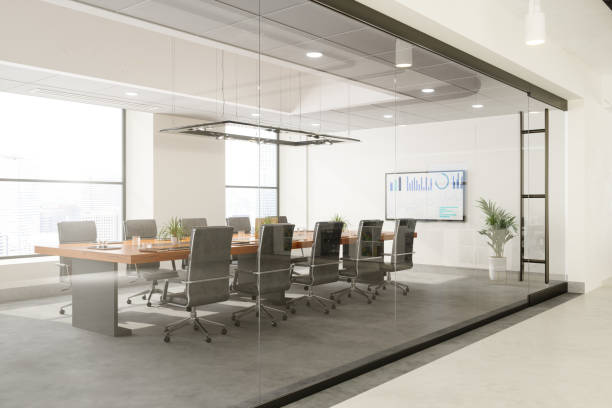We’re all returning from a radical and forced paradigm shift to a new world of working, where a hybrid experience thrives on collaboration, creativity, and cross-functionality. It’s time to take a focused look at your current AV capabilities and evaluate their value. Can your conference room accommodate effective meetings with your remote workforce? Do meetings start and end with a “starfish” style conference phone in the middle of a vast table? Is “leaning in”, “politely yelling”, and “awkwardly gesturing”, what the in-room meeting participants must do in order for remote team members to see and hear them?
Even if your conference spaces have some modern features, a spatial and technology refresh might be in order. You know it’s time to update your AV equipment and meeting spaces when:
1. No one in your office remembers Flashdance or Reaganomics. Or how to dial out on the conference line. Phone-based meetings were fine when everyone worked in the office, but now AV technology must accommodate the needs of a hybrid workforce and be easy enough for anyone to use. Not every meeting requires video, but nearly every meeting does require sharing content. After two years of connecting on Zoom, Microsoft Teams, and other platforms, team members have come to expect content and smiling faces, as well as voices in modern meetings.
2. Traditional whiteboards aren’t made for team collaboration. Fortunately, tools like LED display walls now exist, providing vivid, customizable views from any angle in a room. Interactive displays partnered with cloud-based software allows groups to edit, annotate and sketch out ideas in real-time, across any physical divide.
3. Your clients and outside companies beg you to let them schedule and run meetings. Great ideas can’t germinate if people can’t connect because your meeting space equipment is having a bad day. Reliable, low-latency audio is as vital to the meeting spaces of the new work environment as high-quality video, with all the added tools like chat, file sharing, moderator modes, and gallery view.
4. All meetings, great or small, happen in one conference room because that’s where the AV technology is located. A hybrid workforce expects to create collaboration when it’s needed, needing meeting connections options wherever they happen to be now. The future of meeting spaces may be huddle rooms and areas optimized for intimate meetings, using one-touch conferencing, in addition to large conference rooms where more flexible AV tools are provided for more technologically intensive meetings.
5. People must shout so remote participants can hear them. Echo is one issue that plagues many virtual meetings, and horrific acoustics are another. Understanding microphone placement and style, speaker configurations, better sound dampening on walls, and consideration of seating and furniture arrangement, will enable everyone to use speak normally, with confidence in any meeting
6. Meetings waste more time than they save. Time is valuable, and meeting spaces in the future should be mobile-device-enabled or outfitted with voice- or gesture-activated sensors to turn on lights and equipment, unlock doors and admit attendees. Hosts can use a dedicated touchpad or tablet to run the meeting, so they don’t need to bring in and set up their own machine every time. Voice-activated software in each meeting space will reduce the need for hands-on meeting setup. Meetings can convene and end on time, and technology can help. Sensors will power down AV tools if a host forgets to turn things off, saving green and being green.
In conclusion, just five years ago, “touchless” meeting technologies and advanced AV capabilities seemed like a far-off future. However, these solutions are already saving time, space, and productivity in many businesses today. The good news is you might not have to completely tear out your existing spaces and systems to optimize collaboration for your on-site and hybrid teams. Select an AV partner who can help you understand what you already have, how that investment can function as part of a new system, what you still need, what to prioritize, and how to bring it to your offices and remote team members.
AV-Tech would love to be that valued partner. We Got You!



